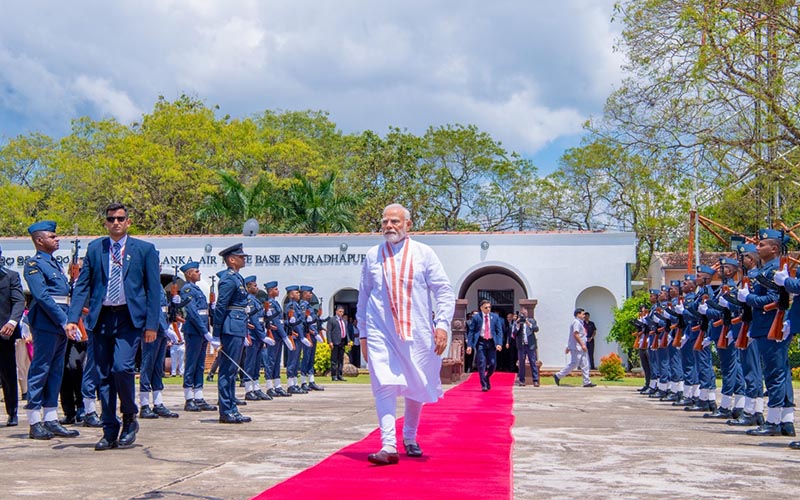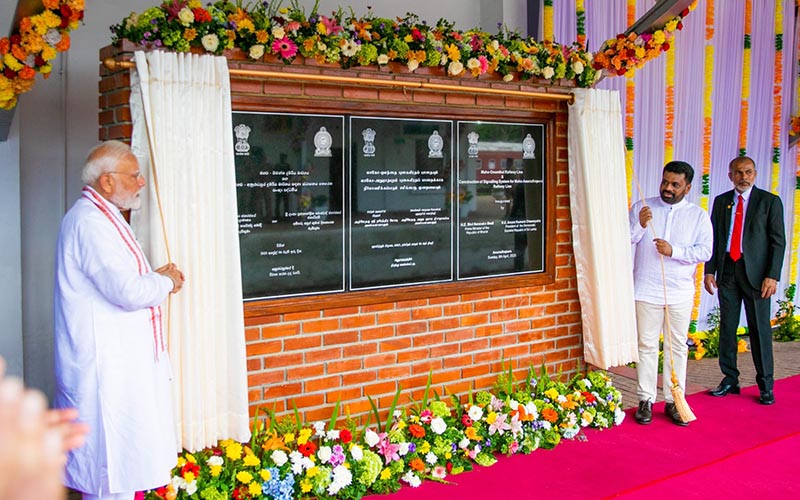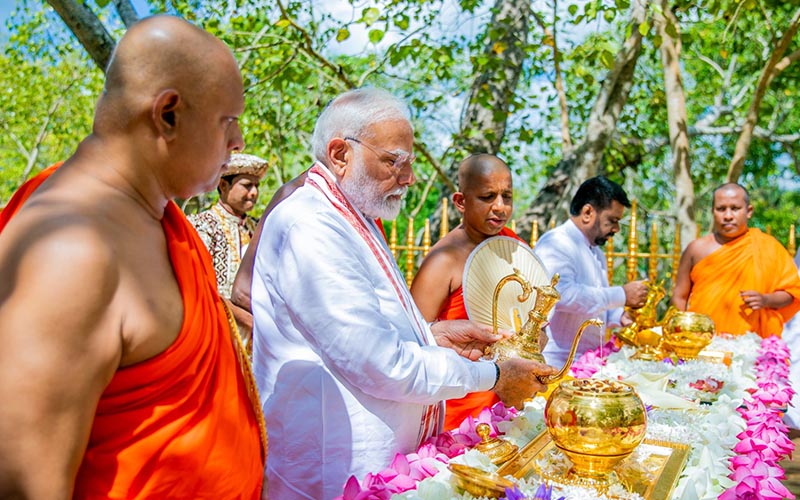News
South Asian black carbon aerosols increase glacial mass loss over Tibetan plateau: Study

=The South Asia region adjacent to the Tibetan Plateau has among the highest levels of black carbon emission in the world.
January 02, 2023 (pti): Black carbon aerosols have indirectly affected the mass gain of the Tibetan Plateau glaciers by changing long-range water vapour transport from the South Asian monsoon region, a study has found.
The South Asia region adjacent to the Tibetan Plateau has among the highest levels of black carbon emission in the world, the researchers said.Black carbon aerosols are produced by the incomplete combustion of fossil fuels and biomass, and are characterised by strong light absorption.
Many studies have emphasised black carbon aerosols from South Asia can be transported across the Himalayas to the inland region of the Tibetan Plateau.Researchers noted that black carbon deposition in snow reduces the albedo of surfaces — a measure of how much of Sun's radiations are reflected — which may accelerate the melting of glaciers and snow cover, thus changing the hydrological process and water resources in the region.
The study, published in Nature Communications, found that since the 21st century, South Asian black carbon aerosols have indirectly affected the mass gain of the Tibetan Plateau glaciers by changing long-range water vapour transport from the South Asian monsoon region.
Black carbon aerosols in South Asia heat up the middle and upper atmosphere, thus increasing the North–South temperature gradient," said Professor KANG Shichang from Chinese Academy of Sciences (CAS).
Accordingly, the convective activity in South Asia is enhanced, which causes convergence of water vapour in South Asia. Meanwhile, black carbon also increases the number of cloud condensation nuclei in the atmosphere," Shichang said.
These changes in meteorological conditions caused by black carbon aerosols make more water vapour form precipitation in South Asia, and the northward transport to the Tibetan Plateau was weakened, the researchers said.As a result, precipitation in the central and the southern Tibetan Plateau decreases during the monsoon, especially in the southern Tibetan Plateau, they said.
The decrease in precipitation further leads to a decrease of mass gain of glaciers.From 2007 to 2016, the reduced mass gain by precipitation decrease accounted for 11% of the average glacier mass loss on the Tibetan Plateau and 22.1% in the Himalayas.The transboundary transport and deposition of black carbon aerosols from South Asia accelerate glacier ablation over the Tibetan Plateau.Meanwhile, the reduction of summer precipitation over the Tibetan Plateau will reduce the mass gain of plateau glaciers, which will increase the amount of glacier mass deficit, Shichang added.
Latest News
Indian Prime Minister Shri Narendra Modi concludes State Visit to Sri Lanka

Indian Prime Minister Shri Narendra Modi departed today (06) from Air Force Base Anuradhapura concluding his State visit to Sri Lanka. The Indian Premier embarked on a tour to Sri Lanka at the invitation from President Anura Kumara Disanayake.
This visit underscores the enduring relationship encapsulated by the theme “Friendship of Centuries, Commitment to a Prosperous Future,” further solidifying the bonds between India and Sri Lanka.
This marks Prime Minister Modi’s fourth visit to Sri Lanka, which has further enhanced the economic, cultural, and historical relations between the two nations, while also reinforcing their multifaceted partnership. This visit by the Indian Prime Minister reinforces Sri Lanka’s important role in India’s “Neighbourhood First Policy” and ‘MAHASAGAR’ vision concerning diplomatic relations.
This state visit is anticipated to yield significant results on various collaborative initiatives, fostering a path towards mutual growth and development. The citizens of Sri Lanka will soon be able to witness the fruitful outcomes of these partnerships, and Indian Prime Minister Shri Narendra Modi’s visit will mark a significant milestone in the government’s pursuit of sustainable development focused on the needs of the people.
Accompanying Indian Prime Minister Modi were Indian External Affairs Minister Dr. S. Jaishankar, National Security Advisor Ajit Doval, Foreign Secretary Vikram Misri and a delegation of senior officials from the Indian government.
[PMD]
Latest News
President Dissanayake and Indian PM Modi jointly commission upgraded Maho-Omanthai railway line & Maho-Anuradhapura railway signalling system

The upgraded Maho–Omanthai railway line and the newly installed Maho–Anuradhapura railway signalling system were officially commissioned by Indian Prime Minister Shri Narendra Modi and President Anura Kumara Disanayake today (06)
The Prime Minister of India is currently visiting Sri Lanka at the invitation of President Anura Kumara Disanayake, reinforcing the longstanding bond encapsulated in the theme “Friendship of Centuries Commitment to a Prosperous Future” between the two nations.
Highlighting one of the key aspects of this visit, the two leaders participated in these inaugural ceremonies. The President and the Prime Minister of India jointly unveiled the commemorative plaque and commissioned the railway line and signalling system.
The upgraded Maho-Omanthai Railway Line project was carried out with funding through the Indian Credit Line, totalling an investment of US$ 91.27 million. The Maho–Anuradhapura railway signalling system, established as a result of President Disanayake’s recent visit to India, was funded by the Indian Government at a cost of USD 14.89 million.
[PMD]
Latest News
Prime Minister Modi and President Dissanayake pay homage to the sacred Jaya Sri Maha Bodhi

Indian Prime Minister Shri Narendra Modi, currently on a State visit to Sri Lanka, along with President Anura Kumara Disanayake paid homage to the sacred Jaya Sri Maha Bodhi in Anuradhapura this morning (06) and received blessings.
Following his visit to the sacred site, Prime Minister Modi proceeded to the Udamaluwa, where he met with the Chief Incumbent of the Atamasthanadhipathi and Chief Sanghanayake of Nuwarakalaviya, Most Venerable Dr. Pallegama Hemarathana Nayaka Thera, for a cordial discussion.
During the meeting, the Prime Minister shared that relics of the Buddha were discovered in excavations conducted in his home state of Gujarat during the 1960s. He further stated that he would discuss with the President of Sri Lanka the possibility of exhibiting these sacred relics in Sri Lanka.
Responding to a request made by the Atamasthanadhipathi to develop Bodh Gaya as a spiritual city, Prime Minister Modi assured that he would take the necessary steps after discussions with President Disanayake and work towards making it a reality.
The Maha Sangha, led by the Atamasthanadhipathi, chanted Seth Pirith and invoked blessings on the Indian Prime Minister.
The Indian Prime Minister also left a commemorative note in the special guest book at the site. In addition, he formally declared open the newly constructed ‘Makara Thorana’ within the Jaya Sri Maha Bodhi premises.
The occasion was also attended by Chief Incumbent of the Ruwanweli Maha Seya Temple Ven. Ethalawetunawewe Gnanathilaka Thera and other Atamasthana Viharadhipathi Theras, Minister of Foreign Affairs, Foreign Employment and Tourism Vijitha Herath, Minister of Trade, Commerce, Food Security and Cooperative Development, Wasantha Samarasinghe, Minister of Health and Mass Media Dr. Nalinda Jayatissa, North Central Province Governor Wasantha Jinadasa, Indian High Commissioner Santosh Jha and others.
[PMD]
-

 Business2 days ago
Business2 days agoDaraz Sri Lanka ushers in the New Year with 4.4 Avurudu Wasi Pro Max – Sri Lanka’s biggest online Avurudu sale
-

 News7 days ago
News7 days agoBid to include genocide allegation against Sri Lanka in Canada’s school curriculum thwarted
-

 Business3 days ago
Business3 days agoStrengthening SDG integration into provincial planning and development process
-

 Features23 hours ago
Features23 hours agoStarlink in the Global South
-

 Business2 days ago
Business2 days agoNew SL Sovereign Bonds win foreign investor confidence
-

 Sports4 days ago
Sports4 days agoTo play or not to play is Richmond’s decision
-

 Features23 hours ago
Features23 hours agoModi’s Sri Lanka Sojourn
-

 Latest News6 days ago
Latest News6 days agoIPL 2025: Rookies Ashwani and Rickelton lead Mumbai Indians to first win











